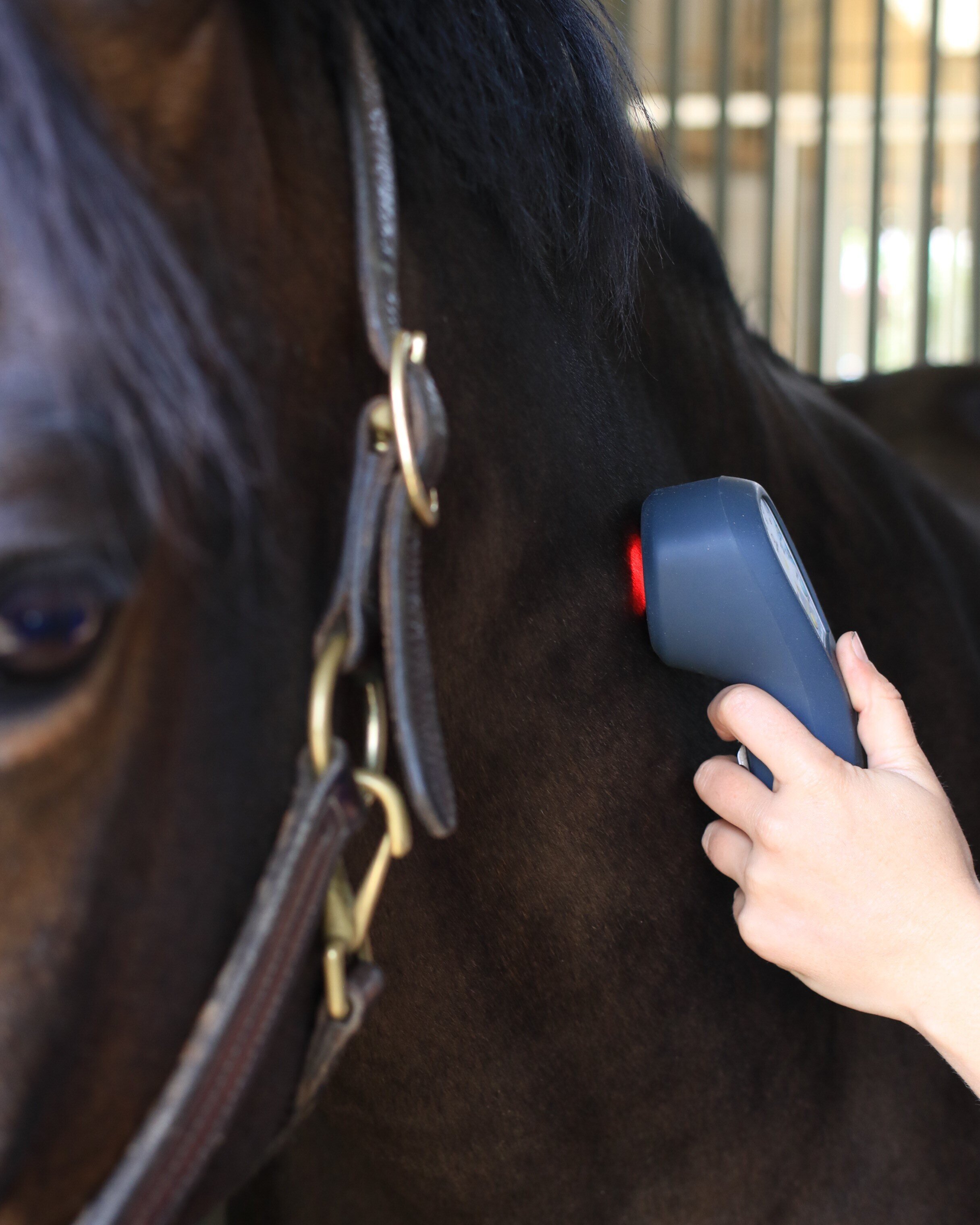Equine Therapy Success Stories: Actual People, Genuine Psychological Makeovers
Equine Therapy Success Stories: Actual People, Genuine Psychological Makeovers
Blog Article
Just How Laser Therapy in Equine Treatment Is Revolutionizing Veterinary Look After Horses
Laser treatment has actually emerged as a transformative approach in equine veterinary care, giving a non-invasive solution that quickens recovery and enhances general health. The portability and convenience of laser treatment gadgets additionally underscore their expanding indispensability among vets.

Recognizing Laser Treatment
Recognizing laser treatment is essential for appreciating its role in equine therapy. Laser treatment, likewise understood as photobiomodulation, includes the application of particular wavelengths of light to cells, which can cause various organic results. This therapeutic modality harnesses the power of light power to permeate the skin and underlying tissues, promoting cellular procedures and boosting cells fixing.
The innovation behind laser therapy is based in the principle of photochemistry, where photons are soaked up by chromophores within cells, resulting in enhanced ATP manufacturing and modulation of responsive oxygen species. This, in turn, advertises cellular expansion, reduces inflammation, and accelerates recovery. Vet specialists use different sorts of lasers, including low-level lasers (LLLT) and high-power Class IV lasers, relying on the details restorative purposes and the nature of the equine problem being treated.
Different laser wavelengths and power setups are thoroughly chosen to target various tissue depths and achieve desired clinical results. Safety and security procedures are vital, as improper use can cause thermal damages or suboptimal therapeutic impacts. Hence, a comprehensive understanding of laser treatment's devices and applications is essential for its effective implementation in equine veterinary practice.
Benefits for Equine Wellness
The myriad advantages of laser therapy for equine health include enhanced recovery, discomfort decrease, and enhanced flexibility. This sophisticated treatment modality leverages certain wavelengths of light to permeate cells, boosting cellular function and promoting rapid tissue repair. The non-invasive nature of laser therapy ensures very little tension and discomfort for the steed, helping with a smoother recovery procedure.

Better wheelchair is an additional critical advantage, particularly for performance and functioning horses. By reducing inflammation and pain, and boosting tissue repair work, laser therapy helps in bring back joint function and muscle mass versatility. The advancing effect of these advantages is not just a quicker return to normal activity however additionally a general improvement in the equine's lifestyle. Therefore, laser treatment stands as a transformative device in modern-day horse vet care.
Typical Problems Dealt With
Laser therapy has become a functional treatment choice for a variety of usual equine problems. Among these, musculoskeletal injuries are particularly open to laser treatment. Soft cells injuries, such as tendonitis and tendon pressures, take advantage of the anti-inflammatory and analgesic effects of laser therapies, which increase healing and minimize pain. Additionally, laser therapy works for conditions like osteoarthritis, where it aids mitigate joint inflammation and advertise tissue repair service.
Wound management is one more location where laser therapy has actually revealed significant guarantee. Persistent wounds or slow-healing ulcers can be especially difficult in equines, however laser treatment boosts cellular regeneration and enhances blood flow, hence speeding up the healing procedure. In addition, laser therapies have actually been successfully utilized in taking care of unguis conditions such as laminitis and abscesses, easing pain and advertising much faster recuperation.
Equine professional athletes frequently deal with performance-related issues like muscle discomfort and anxiety cracks. Laser treatment aids in decreasing muscle mass exhaustion and speeds up the recuperation of micro-injuries, hence making certain that horses go back to come to a head efficiency quicker. By resolving discover this these varied problems, laser treatment is transforming the landscape of veterinary care, giving a non-invasive, effective option to conventional therapies.
Modern Technology Behind Laser Treatment

Laser devices used in veterinary medication usually make use of low-level laser treatment (LLLT) or chilly laser treatment. Unlike high-powered surgical lasers, these devices run at lower energy levels, optimizing restorative benefits while reducing thermal damages. The energy from the laser light promotes adenosine triphosphate (ATP) production, boosts mobile metabolic process, and accelerates cells fixing procedures.
Modern laser treatment devices for equine therapy is created with flexible settings to provide to the particular requirements of various tissues and problems. Additionally, improvements in laser modern technology have led to the development of portable, handheld gadgets, making it much easier for veterinarians to provide therapy in a range of settings, from clinics to stables.
Success Stories and Study
Showcasing the concrete benefits of laser therapy, countless success stories and study illuminate its transformative influence on equine health. One such case involves a pureblooded racehorse struggling with chronic tendonitis. Standard treatments yielded discover this very little enhancement, however after integrating laser treatment into the regimen, the horse exhibited look at more info significant decreases in swelling and discomfort within weeks, inevitably returning to competitive racing.
Another compelling instance features a dressage horse diagnosed with serious pain in the back, limiting its performance. A veterinary team utilized low-level laser treatment (LLLT) to target the swollen areas, leading to marked enhancement in flexibility and a significant decrease in pain. Over several sessions, the horse restored its peak type, showcasing the efficacy of laser therapy in resolving musculoskeletal problems.
Furthermore, a research carried out at a leading equine clinic examined 50 steeds with various soft tissue injuries treated with laser treatment. The results stood out: 85% of the horses demonstrated sped up recovery times and enhanced wheelchair. These situations highlight the versatility and performance of laser treatment in equine medicine, providing a non-invasive, scientifically-backed approach to enhancing healing and performance in steeds.
Conclusion
Laser treatment is reinventing equine veterinary treatment by offering a non-invasive treatment that speeds up healing, minimizes swelling, and alleviates pain. With its performance in treating a series of conditions, from bone and joint injuries to chronic conditions like osteo arthritis, this innovation substantially improves equine health and wheelchair. The transportability and versatility of laser therapy further underscore its transformative influence on veterinary practices, strengthening its role as an essential tool in modern equine health care.
Report this page